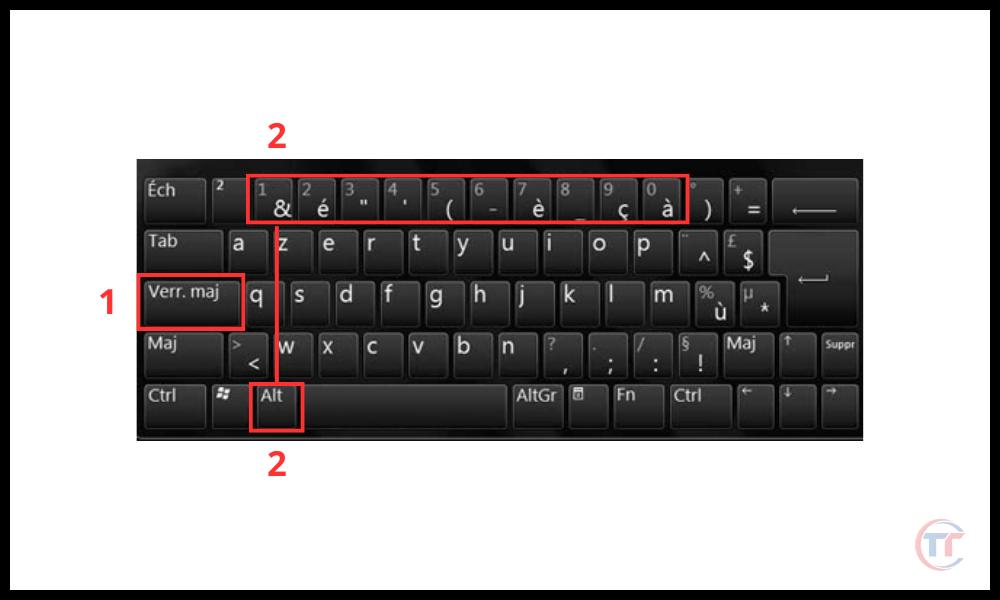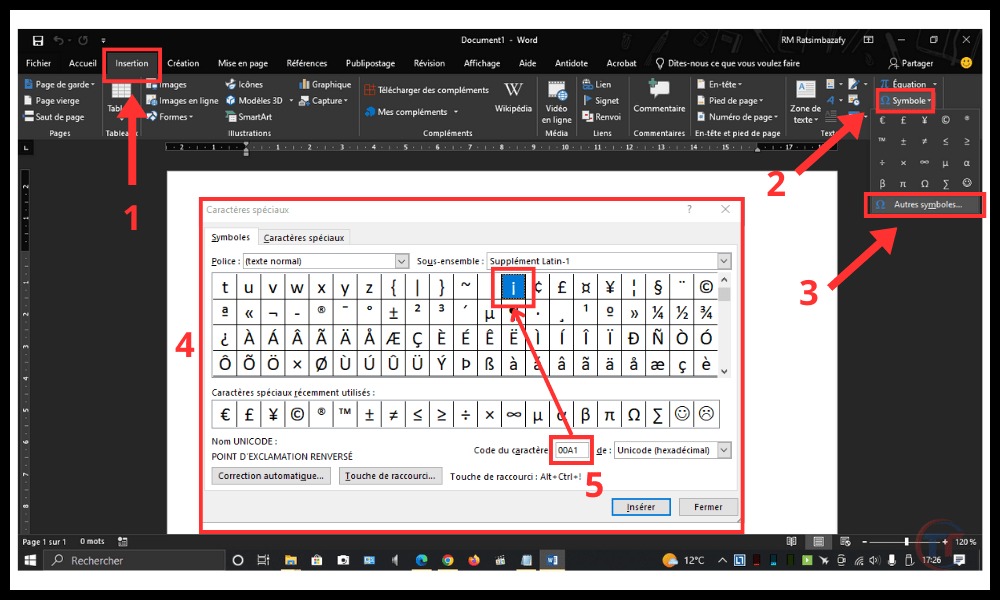The backwards exclamation point , also called an inverted exclamation point or initial exclamation point , is a punctuation mark used in some languages , including Spanish, Catalan, Basque and Asturian. We'll show you how to do it on your keyboard, on your smartphone or with word processing software like word!
How to make an exclamation point upside down on QWERTY keyboard?
The backwards exclamation point is a symbol used primarily in the Spanish language to mark the beginning of an exclamatory or interrogative sentence. It is written ¡ and it is placed before the word that begins the sentence, in symmetry with the normal exclamation point which is placed at the end. For example: ¡Hola! ¿Qué tal?
To make an upside down exclamation point on a QWERTY keyboard, there are several possible methods depending on the operating system you are using. Here are some examples :
- On Windows : You can use the key combination Alt + 0161 . To do this, you must hold down the Alt key and type the numbers 0161 on the numeric keypad of your keyboard. Then release the Alt key and the ¡ symbol will appear.
- On Mac : You can use the key combination Option + 1 . To do this, you must hold down the Option (or Alt) key and type the number 1 on your keyboard. Then release the Option key and the ¡ symbol will appear.
- On Linux : You can use the key combination Ctrl + Shift + U , followed by the hexadecimal code A1 . To do this, you need to hold down the Ctrl and Shift keys and type the letter U on your keyboard. Next, release the Ctrl and Shift keys and type the code A1 (in upper or lower case). Finally, press the Enter key and the ¡ symbol will appear.
If you have an Qwerty keyboard, you can easily make an upside down exclamation point by pressing the " Alt Gr and key 1 " key at the same time. You will thus obtain the symbol:

This article might interest you : Change QWERTY keyboard to AZERTY on Windows
How to make an upside down exclamation point on AZERTY keyboard?
The upside down exclamation point can also be used on an AZERTY keyboard, which is the most common type of keyboard in French-speaking countries.
However, it is not directly accessible on this type of keyboard, unlike the normal exclamation point which is found on key 8. You must therefore resort to methods similar to those used for the QWERTY keyboard. Here are some examples :
On Windows :
If you have an azerty or other keyboard, you can use the ASCII code to make an upside down exclamation point. ASCII code is a coding system that associates a number with each character . To make an upside down exclamation point, you must use the code 0161 . Here's how to do it:
- Press the Num Lock to activate the number pad.
- Alt key and type 0161 on the number pad.
- Release the Alt and the upside-down exclamation point will appear on the screen.

You can also use the Unicode code to make an upside down exclamation point. The Unicode code is another coding system that makes it possible to represent more characters than the ASCII code . To make an upside down exclamation point, you must use the U+00A1 code . Here's how to proceed:
- Press the Num Lock key [1] to activate the number pad.
- Hold down the Ctrl and Alt keys and type 00A1 on the number pad .
- Release the Ctrl and Alt keys and you will see the ¡ symbol appear.

On Mac
You can use the same key combination as for the QWERTY keyboard, i.e. Option + 1 . The only difference is that you have to press the Shift key at the same time as the Option key to access the number 1 on your keyboard.
On Linux
you can use the same key combination as for QWERTY keyboard, i.e. Ctrl + Shift + U , followed by the hexadecimal code A1 . The only difference is that you have to press the Alt Gr key at the same time as the Ctrl and Shift keys to access the letter U on your keyboard.
Good to know : There are other key combinations, keyboard shortcuts, to insert other symbols and special characters .
How to make an upside down exclamation point on the smartphone?
If you are using a smartphone with an Android or iOS system , you can easily make an upside down exclamation point using the virtual keyboard . Here's how to do it:
- Open the app where you want to write the ¡ symbol , for example a message, email, or note.
- Press the ?123 key to access the symbols .
- Swipe left to see more symbols.
- Press the ¡ key to insert the symbol into your text.

You can also change the language of the virtual keyboard to access the ¡ symbol more easily. Here's how to do it:
- your smartphone settings Language & input section .
- Tap Virtual keyboard and select the keyboard you use , such as Gboard or SwiftKey.
- Tap Languages and add Spanish or another language that uses the ¡ symbol.
- Open the app where you want to write the ¡ symbol and press the globe key to change the language.
- Press the button ! to insert the ¡ into your text.
How to make an upside -down exclamation point on word processing?
If you use word processing software like Word, LibreOffice or Google Docs, you can make an upside down exclamation point using the special character insertion function . Here's how to proceed:
- Open the word processor software and access the document where you want to write the symbol ¡.
- Click the Insert menu and select Special Characters or Symbol depending on the software you are using.
- Search for the symbol ¡ in the list of available characters or type its name (inverted exclamation mark) or code (U+00A1) in the search bar.
- Click on the ¡ symbol to insert it into your document.

You can also use the keyboard shortcuts we saw earlier to make an upside down exclamation point on the word processor. Just use ASCII code or Unicode code with Alt or Ctrl and Alt keys.
How to write the exclamation point backwards on social networks?
On social networks like Facebook, Twitter or Instagram, it is possible to write the exclamation point backwards using the same methods that we saw previously for the keyboard, smartphone, web browser or word processor. Simply choose the method that best suits the device you are using.
You can also copy and paste the ¡ from a website that offers special characters .
Conclusion
The backwards exclamation point is a punctuation mark that indicates the beginning of an exclamatory or interrogative sentence in some languages. It is placed before the first word of the sentence and is combined with a normal exclamation point at the end . It allows you to mark the intonation and the meaning of the sentence from the start, which makes it easier to read and understand the text.




